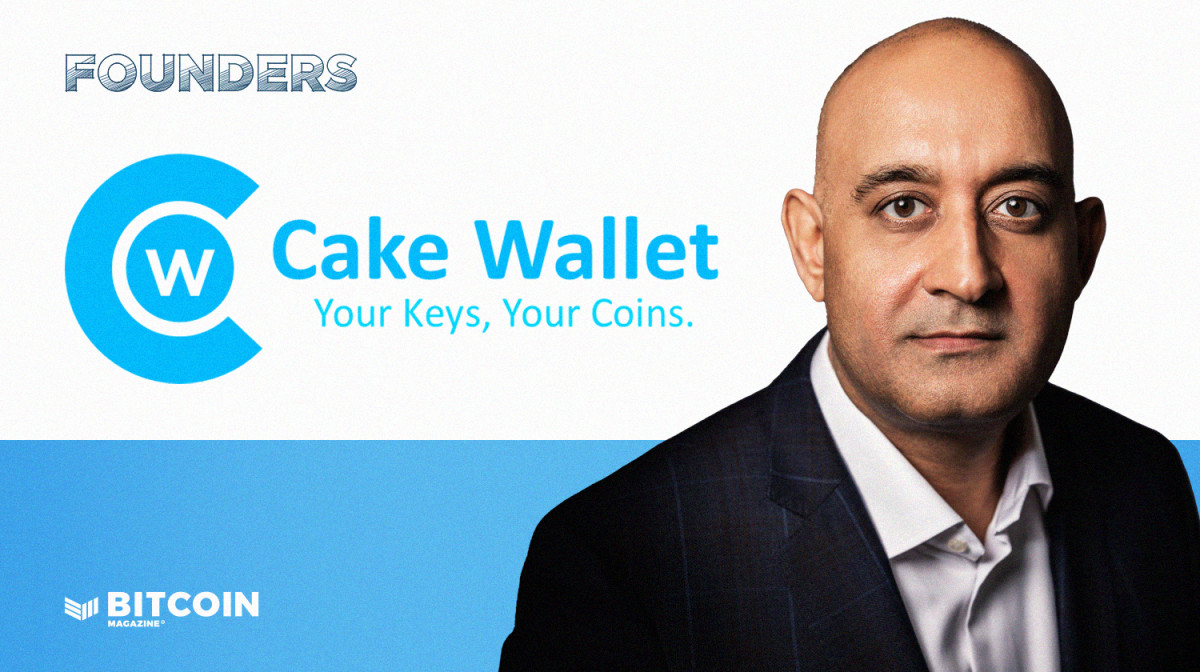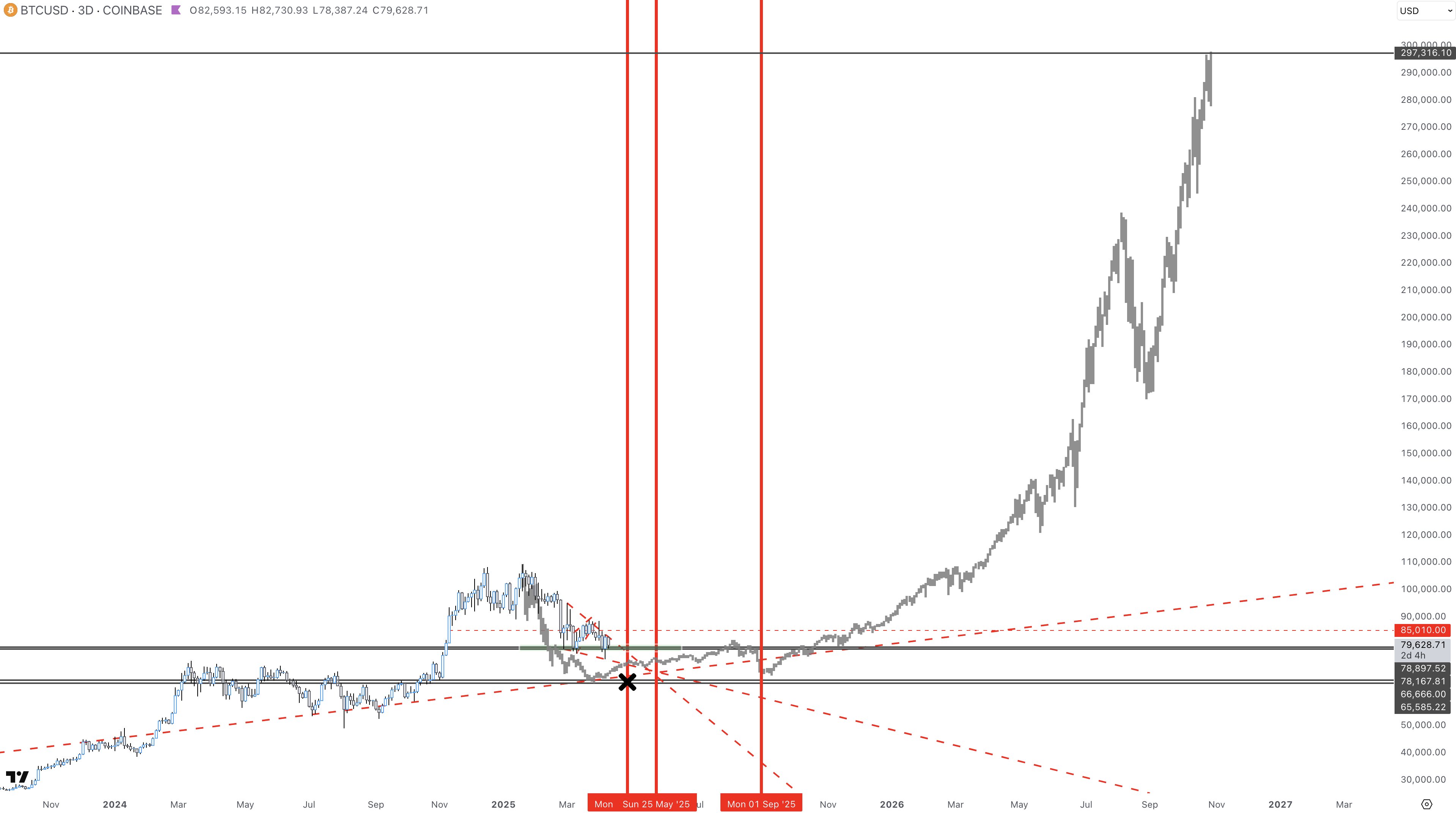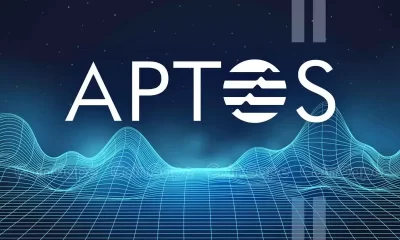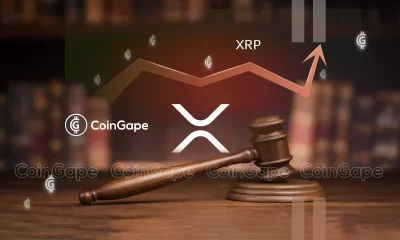Bitcoin
Use Bitcoin Easily And Privately With Cake Wallet
Published
5 months agoon
By
admin

Company Name: Cake Wallet
Founders: Vik Sharma
Date Founded: October 2017
Location of Headquarters: Saint Kitts and Nevis (and staff is remote)
Number of Employees: 14
Website: https://cakewallet.com/
Public or Private? Private
When Vik Sharma isn’t serving as the CEO of Liberty Steel, he’s focused on making bitcoin and other cryptocurrencies easier and more private to use via Cake Wallet.
Sharma believes that a product must be user-friendly if it is to be adopted widely, which is why usability is at the center of the Cake Wallet mission.
“The very broad mission of Cake Wallet is to bring cryptocurrency to the masses, to enable people to easily send, receive, hold, swap, on-ramp, and off-ramp crypto like you would with Venmo or PayPal,” Sharma told Bitcoin Magazine.
The other primary dimension of the Cake Wallet mission is privacy.
Sharma is a staunch believer in the idea of transactional privacy, something he came to value after experiencing just how public bitcoin is by default.
Prioritizing Privacy
Sharma first started acquiring and mining Bitcoin in November 2013. (The ASIC miners he purchased from eBay and ran in the basement of his office building back then were minting him a cool 0.2 bitcoin per day at the time.)
By the mid-2010s, Sharma wanted to do more with his bitcoin than just HODL it. He wanted to use it, and, at that time, it was mostly only illicit online marketplaces that accepted bitcoin.
“Back then, it was hard to find anyone that took bitcoin,” began Sharma. “You had Silk Road, and then AlphaBay and other darknet markets, and I thought, ‘Let me check this out.’”
After attempting to make a purchase on one of those darknet sites, Sharma was promptly notified that he’d crossed a legal line.
“I sent Bitcoin directly from my Coinbase account to the darknet address,” said Sharma.
“And, I kid you not, within seconds, I got an email from Coinbase saying ‘Your account has been suspended or deleted or canceled because you’ve violated some terms of service and you need to move your assets ASAP. I was like, ‘What the heck? How did they find out? There must be millions of addresses out there. Are they tracking millions of addresses?’” he added.
“That woke me up to the transparent nature of Bitcoin.”
Not only did Sharma’s experience using bitcoin in a darknet marketplace enlighten him as to just how public a ledger Bitcoin actually is, but it also introduced him to Monero (XMR).
“There was this other special coin on AlphaBay called Monero, and I thought ‘Why not Litecoin or Ethereum or whatever was big at that time — why only Bitcoin and Monero?’” said Sharma.
It was in pursuing an answer to this question that Sharma went deep down the Monero rabbit hole. His research led him to embracing the concept of transacting privately with cryptocurrency.
And so he created Cake Wallet — a Monero-only wallet at its inception.
Cake Wallet And Silent Payments
Cake Wallet launched in January 2018. Approximately one year later, Sharma added Bitcoin functionality to the wallet, as well.
However, for over five years, Cake Wallet users had little ability to transact privately with bitcoin using Cake Wallet. The wallet didn’t have a Lightning implementation (Lightning offers more privacy than the Bitcoin base chain), nor many other privacy-enhancing features (aside from letting users add or select the node they want to use within the wallet).
If a user wanted to make a private payment, they were better suited using XMR.
But transacting with Bitcoin via Cake Wallet became somewhat more private (though still not as private as using Monero) in September 2024, when Cake wallet became the first bitcoin wallet to implement Silent Payments.
Silent Payments enable users to receive bitcoin payments without revealing their public Bitcoin address. They’re like a P.O. Boxes for public Bitcoin addresses — static addresses that allow users to receive bitcoin without having to reveal their actual Bitcoin address — and they’re great for anyone doing fundraising or accepting payments via a public Bitcoin address.
“When I read about Silent Payments, I liked it right away,” said Sharma. “I wish the Bitcoin community was more enthusiastic about it, because I think it’s a great feature, especially if you’re posting an address publicly, whether for donations or payments.”
Because one of Cake Wallet’s most notable features, Bird Pay, hinges on users posting their address publicly, Silent Payments is a game changer.
Unveiled approximately one year ago, Bird Pay enables Cake Wallet users to send bitcoin (or other crypto assets) to a contact using nothing other than an X handle.
The receiver simply has to add their bitcoin address, which can be a Silent Payments address, to either their bio or a pinned tweet, and Cake Wallet can fetch the information from there.
“CakeWallet will use the Twitter API, pull the address and send the payment to you,” explained Sharma, also noting that this same feature can be used via Nostr or Mastodon.
“There’s a place where you should put your Silent Payments address,” he added.
Cause For Concern
While the Bitcoin and Monero communities have embraced the privacy that Cake Wallet offers, Sharma is concerned that the U.S. federal government could turn out to not be so keen on it.
In an era in which the government is cracking down on privacy-enhancing Bitcoin and crypto services, including Bitcoin Fog, Tornado Cash and Samourai Wallet, it seems difficult for anyone who’s creating such privacy-preserving crypto technology to not think twice about what’s at stake.
“It does worry me — and not because we’re doing anything wrong,” said Sharma. “But something could be twisted or construed to make it seem as if we are doing something wrong.”
As a precautionary measure, Sharma has moved the headquarters of Cake Wallet overseas, from Florida to Nevis and Saint Kitts, something that Roger Ver advised him to do.
He also discusses all updates to Cake Wallet with the company’s general counsel to make sure that Cake Wallet isn’t breaking any laws. While his lawyers have assured him he isn’t, he’s aware that skewed interpretations of laws and legal guidelines could potentially cause problems for Cake Wallet.
“If you dig deep enough into the way the laws are written, they might say, ‘No, you’re a money transmitter business, even though we’re not,’” explained Sharma.
“We’re not touching users’ funds. We don’t have access to them. Even though we built the app, once that app is on the user’s phone, it’s being generated on their phone, not on our servers,” he added.
“But they might come back and say, ‘But it connects to your node initially.’ Who knows? I’m just using that as an example — even though we give the option right up front for users to not connect to our node.”
Staying On Mission
Despite a concerning legal backdrop, Sharma and the Cake Wallet team plan to stay the course and to remain mission-driven, focused on making Bitcoin both easy and private to use.
“We have stuck to our ethos,” said Sharma.
“The team will call each other out like, ‘No, we shouldn’t put this feature in because it violates this privacy or that privacy or could in the future. We have those debates internally all the time,” he added.
And because Sharma has never taken VC money for Cake Wallet, the only people that he and his team have to answer to, aside from themselves, is their users.
“Since we’re not beholden to a VC, investment firm or an angel investor who’s looking for a return, nobody’s on top of us. We’re able to do what our users want, what our community wants.”
Source link
You may like


Strategy Buys More Bitcoin as Tariff Exemptions Send Tech Stocks Soaring


Kraken Expands To TradFi, Set To Launch Stock & ETF Trading


U.S. Crypto Lobbyists Flooding the Zone, But Are There Too Many?


Michael Saylor’s Strategy buys $285M Bitcoin amid market uncertainty


Dogecoin Follows This Blueprint, Says Crypto Analyst


Metaplanet Buys Additional ¥3.8 Billion Worth Of Bitcoin
Bitcoin
Metaplanet Buys Additional ¥3.8 Billion Worth Of Bitcoin
Published
6 hours agoon
April 14, 2025By
admin
Japanese technology firm Metaplanet has acquired an additional 319 bitcoin worth approximately ¥3.78 billion ($26.3 million), continuing its aggressive bitcoin accumulation strategy amid growing U.S.-China trade tensions.
The Tokyo-listed company purchased the bitcoin at an average price of ¥11.85 million ($83,147) per coin, according to a company announcement on Monday. The latest acquisition brings Metaplanet’s total bitcoin holdings to 4,525 BTC, with an aggregate cost basis of $408.1 million at an average purchase price of $90,194 per bitcoin.
The purchase comes as bitcoin experienced a slight decline over the weekend, dropping more than 2% to $83,482 during Asian trading hours. The bitcoin and crypto market has shown sensitivity to emerging geopolitical tensions, particularly surrounding potential new U.S. trade tariffs targeting Chinese electronics.
Metaplanet often referred to as “Asia’s MicroStrategy,” has outlined ambitious plans to expand its bitcoin holdings by 470% to reach 10,000 BTC by the end of 2025 and 21,000 bitcoin by the end of 2026. The company evaluates its performance through “BTC Yield,” a metric measuring bitcoin holding growth relative to shares outstanding. For Q1 2025, Metaplanet reported a BTC yield of 95.6%, with a year-to-date figure of 6.5% as of April 14.
The company’s latest move has elevated its position to become the ninth-largest public holder of bitcoin globally. Metaplanet’s bitcoin strategy has gained additional attention following the recent appointment of Eric Trump to its Strategic Advisory Board, citing his business expertise and passion for bitcoin. The timing of the purchase coincides with complex market dynamics as investors process mixed signals from Washington regarding U.S. trade policy.
Metaplanet’s bitcoin acquisition strategy is supported by various capital market activities, including bond issuances and stock acquisition rights, designed to raise funds while minimizing shareholder dilution. The company has currently executed approximately 41.7% of its “210 million plan.”
Metaplanet’s strategic pivot to bitcoin accumulation closely mirrors the playbook pioneered by Michael Saylor’s Strategy, albeit on a smaller scale. Since launching its bitcoin treasury operations, the Japanese firm has demonstrated remarkable success in implementing a similar approach of leveraging financial instruments and market opportunities to acquire bitcoin.
Like Strategy, Metaplanet has utilized a combination of convertible debt offerings and equity-linked instruments to fund its acquisitions while maintaining a healthy balance sheet. The strategy has yielded impressive results, with the company’s bitcoin holdings growing to over 4,500 BTC in just over a year.
Source link
Bitcoin
Crypto Trader Unveils Massive Bitcoin Price Target Amid Extended BTC Bull Market – Here’s His Outlook
Published
8 hours agoon
April 14, 2025By
admin
A widely followed crypto strategist believes that Bitcoin (BTC) can take the path of higher for longer this market cycle.
Pseudonymous analyst Jack tells his 268,200 followers on the social media platform X that he thinks Bitcoin will not print a new all-time high this year after US President Donald Trump instigated a global trade war and created uncertain market conditions.
The trader shares a chart suggesting that Bitcoin will create a durable bottom between $66,000 and $80,000 for the rest of the year before launching a new bull run in 2026.
“Trump path clearly is contraction for now.
But in that world of less globalization and trust, Bitcoin is a good asset to have, becoming a ball held under water.
Similar to how 2013 saw a short bear [market].”

Looking at the trader’s chart, he appears to suggest that Bitcoin will rally to as high as $297,000 by November of 2026.
Jack says that one catalyst that could send Bitcoin flying is the potential capital rotation from gold to BTC. According to the trader, gold investors will eventually come to know that Bitcoin is far better than the precious metal as a safe-haven asset.
“What if Gold is trading like it is because everyone is scrambling to redeem paper for physical, of which there is a scarcity, vs. all the paper that has been issued, essentially catching up to its true value that has been diluted with paper
Bitcoin doesn’t have this issue and will rally once people realize it is the better alternative for trade due to this very specific property.”
“Paper” gold refers to financial instruments that allow investors to gain exposure to the precious metal without having to deal with the expenses or logistics of physically possessing the commodity. Jack appears to be highlighting Bitcoin’s portability as BTC holders can easily store, access and transfer their coins as long as they have the keys to their wallet.
At time of writing, Bitcoin is trading for $84,244.
Follow us on X, Facebook and Telegram
Don’t Miss a Beat – Subscribe to get email alerts delivered directly to your inbox
Check Price Action
Surf The Daily Hodl Mix
 

Disclaimer: Opinions expressed at The Daily Hodl are not investment advice. Investors should do their due diligence before making any high-risk investments in Bitcoin, cryptocurrency or digital assets. Please be advised that your transfers and trades are at your own risk, and any losses you may incur are your responsibility. The Daily Hodl does not recommend the buying or selling of any cryptocurrencies or digital assets, nor is The Daily Hodl an investment advisor. Please note that The Daily Hodl participates in affiliate marketing.
Generated Image: Midjourney
Source link
Bitcoin
Michael Saylor Teases New Bitcoin Buy After Strategy’s $7.69 Billion Q1 BTC Buying Spree
Published
12 hours agoon
April 14, 2025By
admin
Bitcoin (BTC) proponent Michael Saylor has hinted the company he co-founded, Strategy (MSTR), may be set to announce an additional BTC purchase this week shortly after revealing it expects a net loss in the first quarter of the year over unrealized losses on its massive BTC holdings.
The company has added 80,785 BTC to its balance sheet since the beginning of the year after raising a total of $7.69 billion during the first quarter, with over half of that coming from common stock sales. Most, if not all, of those funds were used to buy bitcoin.
On Sunday, Saylor posted a BTC holdings tracker to X, a move that typically precedes a purchase announcement, commenting there are “no tariffs on orange dots.” The comment implies the company’s BTC purchases were unaffected by the reciprocal tariffs Donald Trump introduced earlier this month and the ensuing U.S.-China trade war.
The company paused its buying during the week ending April 6. Its crypto stash is currently worth roughly $44.59 billion, and was acquired for $35.63 billion.
Strategy currently holds 528,185 BTC bought at an average price of $67,458 according to Bitcointreasuries data equivalent to 2.515% of the cryptocurrency’s total supply.
Source link

Strategy Buys More Bitcoin as Tariff Exemptions Send Tech Stocks Soaring

Kraken Expands To TradFi, Set To Launch Stock & ETF Trading

U.S. Crypto Lobbyists Flooding the Zone, But Are There Too Many?

Michael Saylor’s Strategy buys $285M Bitcoin amid market uncertainty

Dogecoin Follows This Blueprint, Says Crypto Analyst

Metaplanet Buys Additional ¥3.8 Billion Worth Of Bitcoin

Crypto Trader Unveils Massive Bitcoin Price Target Amid Extended BTC Bull Market – Here’s His Outlook

Is it possible to make $1m with crypto?

Japan’s Metaplanet Buys Another $26M in Bitcoin Amid Tariff Market Uncertainty

Has Ethereum Price Bottomed? 3 Reason Why ETH Could Crash More
Michael Saylor Teases New Bitcoin Buy After Strategy’s $7.69 Billion Q1 BTC Buying Spree

Crypto markets ‘relatively orderly’ despite Trump tariff chaos: NYDIG

Fartcoin ‘Hot Air Rises’ — $1.50 Just A Whiff Away

What happened to the RWA token?

Crypto Strategist Sees Solana-Based Memecoin Surging Higher, Says One AI Altcoin Flashing Strong Chart

Arthur Hayes, Murad’s Prediction For Meme Coins, AI & DeFi Coins For 2025

Expert Sees Bitcoin Dipping To $50K While Bullish Signs Persist

Aptos Leverages Chainlink To Enhance Scalability and Data Access

Bitcoin Could Rally to $80,000 on the Eve of US Elections

Crypto’s Big Trump Gamble Is Risky

Institutional Investors Go All In on Crypto as 57% Plan to Boost Allocations as Bull Run Heats Up, Sygnum Survey Reveals

Sonic Now ‘Golden Standard’ of Layer-2s After Scaling Transactions to 16,000+ per Second, Says Andre Cronje

Ripple-SEC Case Ends, But These 3 Rivals Could Jump 500x

Has The Bitcoin Price Already Peaked?

A16z-backed Espresso announces mainnet launch of core product

The Future of Bitcoin: Scaling, Institutional Adoption, and Strategic Reserves with Rich Rines

3 Voting Polls Show Why Ripple’s XRP Price Could Hit $10 Soon

Xmas Altcoin Rally Insights by BNM Agent I

Blockchain groups challenge new broker reporting rule

I’m Grateful for Trump’s Embrace of Bitcoin
Trending

 24/7 Cryptocurrency News5 months ago
24/7 Cryptocurrency News5 months agoArthur Hayes, Murad’s Prediction For Meme Coins, AI & DeFi Coins For 2025

 Bitcoin3 months ago
Bitcoin3 months agoExpert Sees Bitcoin Dipping To $50K While Bullish Signs Persist

 24/7 Cryptocurrency News3 months ago
24/7 Cryptocurrency News3 months agoAptos Leverages Chainlink To Enhance Scalability and Data Access

 Bitcoin5 months ago
Bitcoin5 months agoBitcoin Could Rally to $80,000 on the Eve of US Elections

 Opinion5 months ago
Opinion5 months agoCrypto’s Big Trump Gamble Is Risky

 Bitcoin5 months ago
Bitcoin5 months agoInstitutional Investors Go All In on Crypto as 57% Plan to Boost Allocations as Bull Run Heats Up, Sygnum Survey Reveals

 Altcoins2 months ago
Altcoins2 months agoSonic Now ‘Golden Standard’ of Layer-2s After Scaling Transactions to 16,000+ per Second, Says Andre Cronje

 Price analysis5 months ago
Price analysis5 months agoRipple-SEC Case Ends, But These 3 Rivals Could Jump 500x


